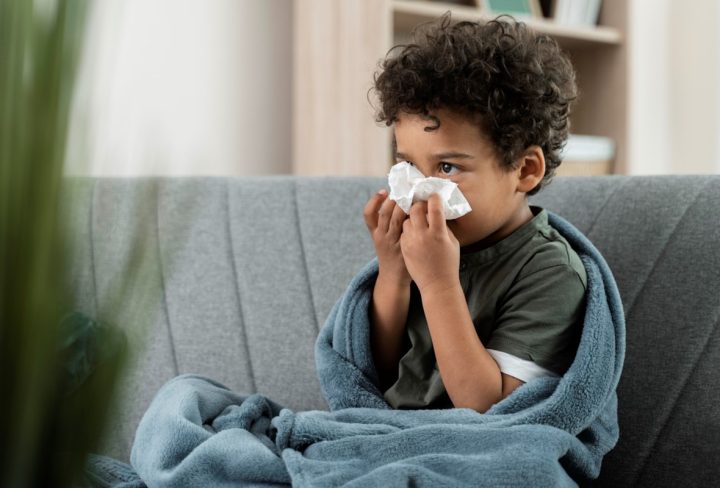Bronchitis is a common respiratory condition that affects people of all ages, including children. It occurs when the bronchial tubes, which carry air to the lungs, become inflamed and irritated. In children, bronchitis can be a distressing experience, but with proper understanding and care, it can be managed effectively. In this article, we will explore the causes, symptoms, diagnosis, treatment, and prevention of bronchitis in children.
Causes of Bronchitis in Children:
Bronchitis in children is primarily caused by viral infections. The most common culprit is the same virus that causes the common cold—usually the rhinovirus. Other viruses, such as respiratory syncytial virus (RSV) and influenza virus, can also lead to bronchitis. Bacterial infections can occasionally cause bronchitis, but they are less common.
Symptoms of Bronchitis in Children:
- Cough: A persistent cough, which may produce phlegm or mucus, is the most characteristic symptom of bronchitis. The cough may start off dry and later become productive.
- Chest congestion: Children with bronchitis often experience chest congestion, which can cause discomfort and difficulty breathing.
- Wheezing: Wheezing, a high-pitched whistling sound during breathing, is common in children with bronchitis. It occurs due to narrowed airways.
- Fatigue and irritability: Bronchitis can make children feel tired, irritable, and generally unwell.
Diagnosing Bronchitis in Children:
If your child is displaying symptoms of bronchitis, it is important to consult a healthcare professional for an accurate diagnosis. The doctor will likely conduct a physical examination and ask about the symptoms. In some cases, additional tests such as a chest X-ray or a mucus sample analysis may be recommended to rule out other possible causes and determine the presence of a bacterial infection.
Treatment and Management:
- Rest and hydration: Ensure that your child gets plenty of rest and drinks an adequate amount of fluids to stay hydrated.
- Medications: Over-the-counter cough suppressants and pain relievers can help alleviate symptoms. However, it is crucial to consult a healthcare professional before administering any medication to your child.
- Inhalation therapy: In cases of severe bronchitis, inhalation therapy with bronchodilators or corticosteroids may be prescribed to help open the airways and reduce inflammation.
- Humidifier use: Using a cool mist humidifier in your child’s room can help soothe the airways and relieve congestion.
Preventing Bronchitis in Children:
Prevention plays a vital role in reducing the risk of bronchitis in children. Here are some preventive measures you can take:
- Frequent handwashing: Encourage your child to wash their hands regularly, especially before meals and after coming into contact with someone who is sick.
- Proper hygiene practices: Teach your child to cover their mouth and nose with a tissue or their elbow when coughing or sneezing, and to dispose of tissues properly.
- Vaccination: Ensure your child receives all recommended vaccinations, including the influenza vaccine, to minimize the risk of viral infections that can lead to bronchitis.
- Avoidance of tobacco smoke: Keep your child away from secondhand smoke, as it can exacerbate respiratory symptoms and increase the risk of bronchitis.
Bronchitis can be a challenging respiratory condition for children, but with the right care and management, most cases can be successfully treated at home. By understanding the causes, symptoms, diagnosis, treatment, and prevention strategies, parents can play an active role in promoting their child’s respiratory health. Remember to consult a healthcare professional for an accurate diagnosis and tailored treatment plan for your child. With proper care and attention, your child can recover from bronchitis and breathe comfortably once again.


